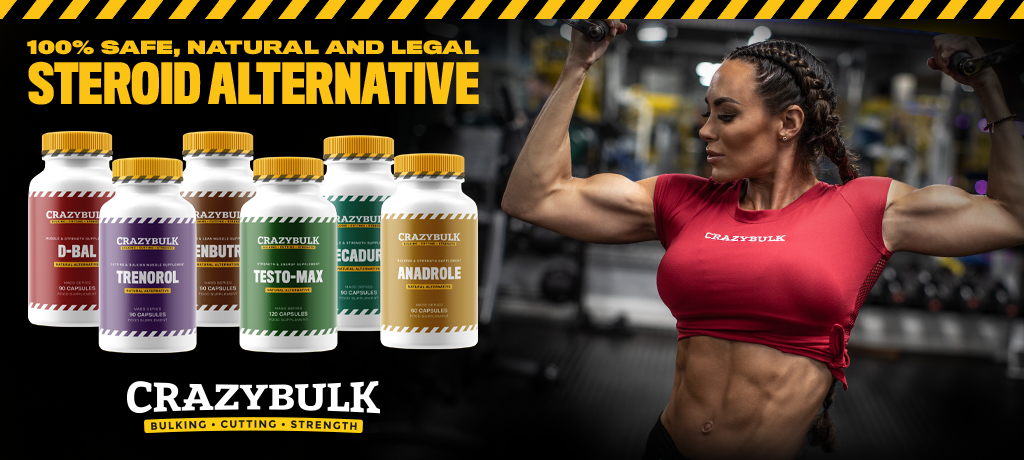While it’s a common belief that testosterone, often dubbed the “T hormone,” is exclusive to men, women indeed produce it. Not only does the female body synthesize testosterone, but it also produces Human Growth Hormone (HGH). However, the levels present in women are generally lower than in men. The presence of testosterone in females can sometimes result in certain adverse effects, notably impacting reproductive capabilities. Testosterone levels in women can be influenced by various factors, and it’s crucial to understand these determinants.
The Role of Testosterone in Women
In women, testosterone production occurs mainly in the ovaries and the adrenal cortex. This hormone plays a pivotal role in various functions:
- Reproductive Functions: Testosterone is essential for the development of pregnancy, aiding in the maturation of follicles. When testosterone levels spike during ovulation, it can intensify feelings of sexual desire.
- Bone Health: During adolescent years, testosterone contributes to bone structure development. As women approach menopause, the hormone helps maintain bone density. A disruption in testosterone balance can lead to conditions like osteoporosis.
- Muscle Development: Testosterone guides the muscle development in a gender-specific manner. Even with high protein intake and intensive workouts, women generally don’t amass as much muscle as men due to lower testosterone levels. This is a reason why some female bodybuilders resort to steroids to enhance muscle growth.
- Hormonal Balance and Fat Metabolism: Many hormones crucial for reproduction are formed, stored, and metabolized in fat tissues. Within these tissues, testosterone gets converted into estrogen, the primary female hormone. A deficiency in testosterone can lead to abdominal obesity and excess fat accumulation around the waist.
- Mental Health and Cognitive Abilities: Testosterone plays a role in mitigating feelings of anxiety, fear, and depression. Studies suggest that women with elevated testosterone levels often exhibit sharper cognitive abilities and memory functions. On the downside, an excess of this hormone can lead to assertive, aggressive behaviors and heighten the desire for dominance, both in personal relationships and career pursuits. Such women may be more susceptible to addictions like smoking, drugs, and gambling. On the other hand, those with lower testosterone levels tend not to show such tendencies.
Total and Free Testosterone in Women
Testosterone in women exists in two distinct forms:
- Free Testosterone: This form of the hormone isn’t bound to proteins and plays a crucial role in sexual development during adolescence, particularly in the formation of mammary glands. When conducting tests to monitor the endocrine profile, it’s the free testosterone levels that are primarily checked.
- Total Testosterone: This includes both free testosterone and the portion bound to proteins. Only about 2% of total testosterone is actually in the free, unbound form.
As women age, it’s natural for testosterone levels to decrease. Intriguingly, the levels can change during the day. For example, testosterone concentrations are generally higher in the morning, making it the ideal time for tests. By evening, these levels dip. Post-menopause, there’s a more pronounced decline in testosterone. However, during pregnancy, testosterone production increases, as the fetus contributes to its production.
Testosterone Levels Across Different Ages
Testosterone levels vary based on age. The measurement unit for free testosterone is pg/ml. Here’s a breakdown of average testosterone levels for different age groups:
| Age Group | Average Testosterone Levels (pg/ml) |
|---|---|
| Under 20 | 0.12-3.1 |
| 21-39 | 0.12-3.1 |
| 40-59 | 0.12-2.6 |
| Over 60 | 0.12-1.7 |
Total testosterone reflects the entire amount present in the blood, regardless of its binding to proteins. For women, irrespective of age, the acceptable range is between 0.26 to 1.3 ng/ml.
It’s imperative to note that when assessing testosterone levels, the specific protocols and standards of the testing laboratory can influence results. Different facilities might have varying reference values based on the unique reagents they use. If you’re ever in doubt about the results you receive, consider getting retested at another reputable facility.
Factors Influencing Low Testosterone in Women
Testosterone levels can be impacted by various factors, including the time of day, emotional state, and menstrual cycle. A significant deviation from the typical range can point towards medical conditions like:
- Disorders of the breast
- Cardiovascular issues
- Pancreatic diabetes
- Diminished libido
- Inflammation of the endometrium
- Ovarian complications
Lifestyle choices and external factors, such as obesity, frequent alcohol consumption, smoking, and chronic stress, can also lead to a decline in testosterone. Moreover, certain diets, especially those heavy on junk and processed foods, can contribute to reduced testosterone levels. It’s crucial to be aware of these factors and their potential effects on hormonal health.
Detecting and Addressing Testosterone Fluctuations in Women
The gradual decline in testosterone levels in women is not always immediately apparent, as this decrease can unfold over extended periods, from months to years.
Signs of Low Testosterone in Women
Several symptoms indicate lowered testosterone levels. Some of the most evident include:
- Unexplained accumulation of fat, especially on areas like the lower abdomen, legs, arms, and neck.
- Increased skin dryness and fragility.
- Hair becoming brittle and losing its luster.
- Diminished sexual drive or libido.
- Persistent feelings of exhaustion and weariness.
However, many women often overlook these signs, attributing them to other causes or aging. One critical symptom pointing directly to low testosterone is discomfort or pain during sexual intercourse. This arises because testosterone plays a role in the production of vaginal secretions that act as a lubricant. A deficiency in this hormone can hinder a woman’s ability to enjoy sexual activities, which might then prompt a visit to a healthcare professional for consultation.
Indications of Elevated Testosterone in Women
On the flip side, if a woman’s testosterone levels surge too high, the signs can be visibly discernible. It’s vital to understand that these symptoms, while indicating hormonal imbalance, could also suggest the onset of more severe health issues.
If any of these symptoms become apparent, consulting a healthcare professional is crucial:
- Noticeably stiffer and darker hair growth on the upper lip.
- Enhanced body hair thickness.
- Increased oil production on the skin, necessitating frequent bathing.
- Breakouts or rashes, especially on the facial region.
- Dry, lax skin on the hands.
- A deepening or coarsening of the voice.
- Unaccounted weight gain.
- Heightened sexual drive.
Other specific symptoms to look out for include irregular menstrual cycles, a body shape resembling male patterns, heightened aggressiveness, voice changes, and an enlarged clitoris. Persistent high levels of testosterone can, over time, adversely impact the ovaries and their functionality.
Addressing Elevated Testosterone Levels
For women experiencing heightened testosterone, lifestyle modifications are the first step. This includes maintaining a balanced weight and adopting a healthier lifestyle. In some cases, medical interventions like drug therapy with Spironolactone can be considered upon recommendation by a healthcare expert.
Testosterone Testing: Guidelines and Protocol
Typically, the wait time for testosterone test results is short, often with results available within a day.
To ensure the integrity and accuracy of the test, certain guidelines should be followed. For the most dependable results, it’s best to undergo the test between days 3-5 or 8-10 of the menstrual cycle.
It’s recommended to refrain from intense physical activities, including sports and intimate relations, for 24 hours preceding the test. Also, abstain from drinking alcohol and smoking during this period.
It’s crucial to be transparent with your healthcare provider regarding any medications you are currently on, especially those for chronic conditions. Medications to highlight include anticonvulsants, anabolic steroids, valproic acid, and Clomid, as these can directly impact testosterone levels.
Testosterone is pivotal for both genders. Address any signs of its reduction or other associated health concerns promptly. Seek medical advice swiftly to maintain reproductive health and fertility. In instances of elevated testosterone, a healthcare professional might recommend various treatments:
- Eflornithine (brands such as Vaniqa, Eflotism, Plenas, Cycladin) can slow down the growth of new facial hair.
- Metformin (under brands like Amophage, Anglucid, Avandamet, among others) treats type II diabetes.
- Progestin-based medications, including megestrol, norethindrone, levonorgestrel, and medroxyprogesterone, can help regulate menstrual cycles and improve fertility.
- Spironolactone (found in Spirix, Spirinolakton, and other brands) is a diuretic that manages fluid and salt balance and curtails excessive hair growth.
- Glucocorticoids: Some women with excessive hair growth may benefit from glucocorticoid therapy which can lower serum testosterone levels.
The Risks of Testosterone Steroids and Their Aftermath
Misuse or overdosing on hormonal medications, especially those derived from testosterone like Boldenone, Oxandrolone, and Winstrol, might lead to an increased sexual drive. Side effects can also include clitoromegaly (enlargement of the clitoris’s external section).
Prolonged consumption of steroid-based drugs can manifest in other complications like acne, seborrhea, and more. Additionally, other drugs popular in the athletic community, such as Clenbuterol, can have harmful repercussions.
It’s vital to note: the masculine secondary sexual traits that develop in women due to the misuse of anabolic steroids, especially in sports, are permanent. Techniques aimed at reducing testosterone are futile in such scenarios. Prioritizing natural supplements over steroids is a more health-conscious approach, rather than jeopardizing your well-being with potential severe risks.

